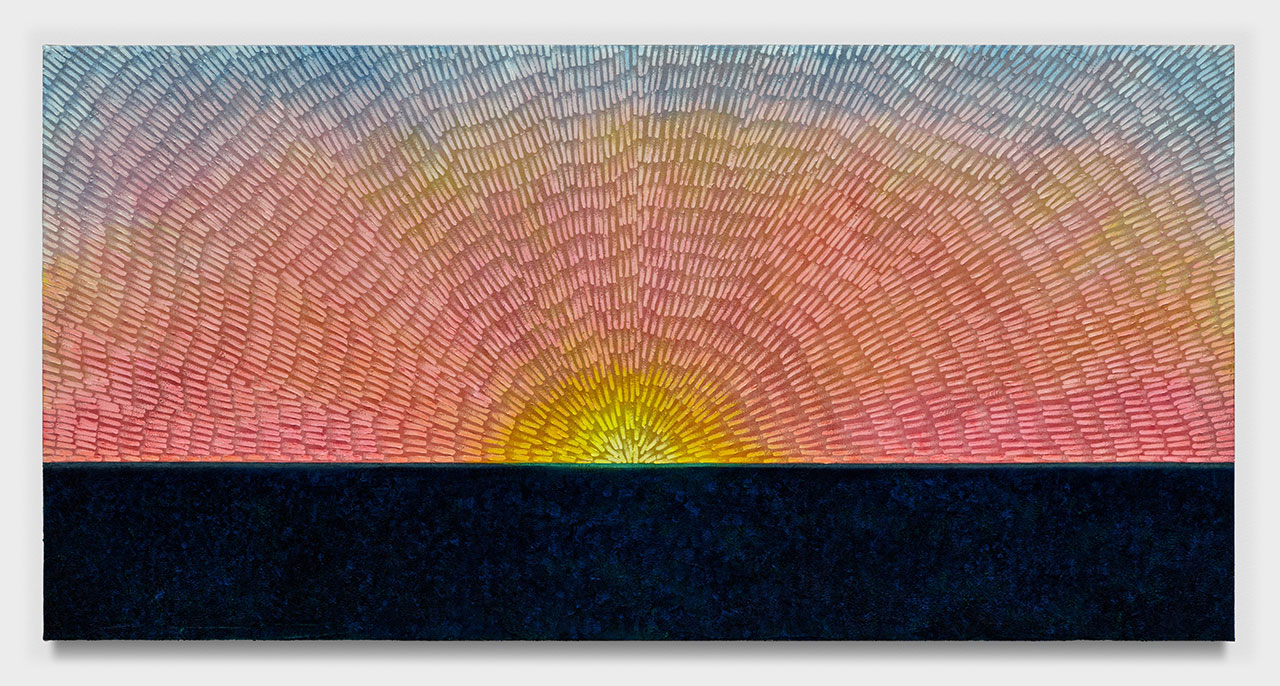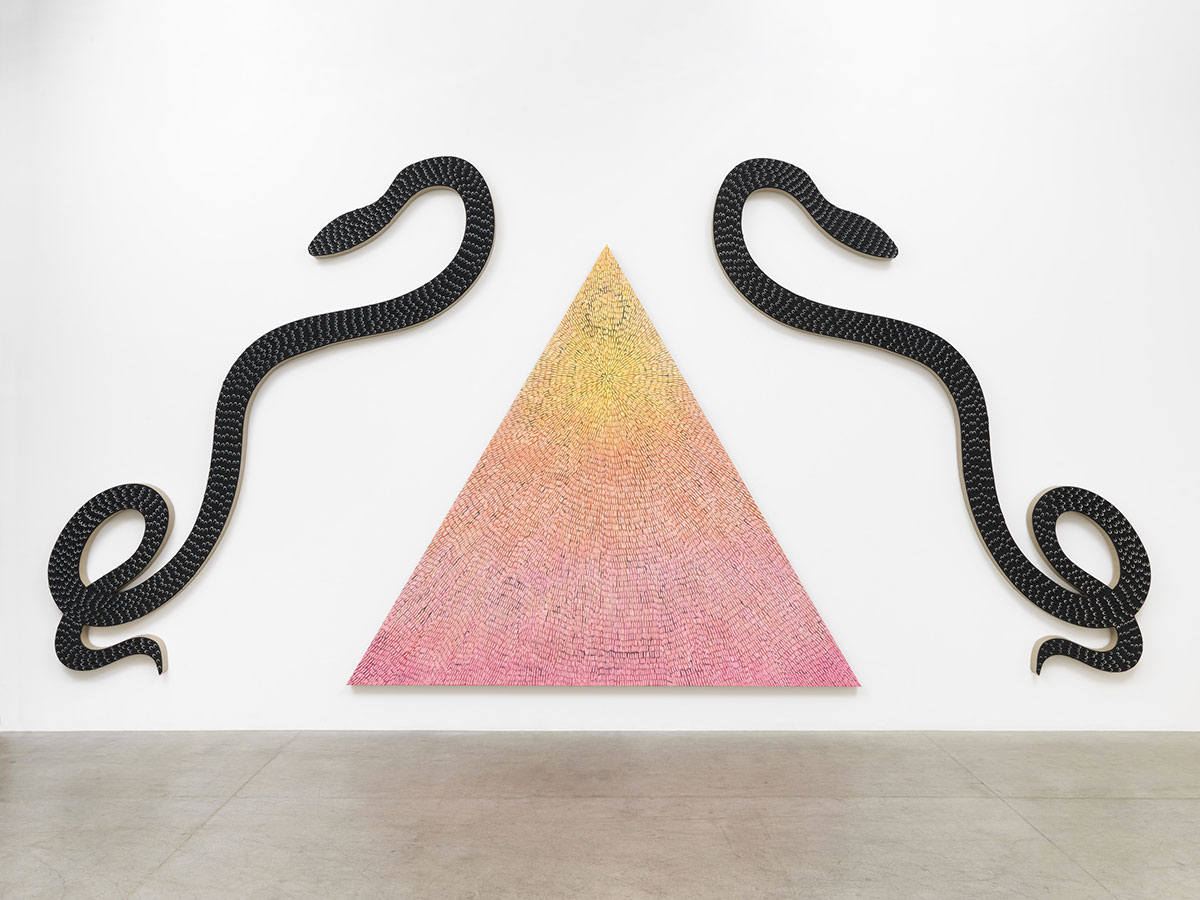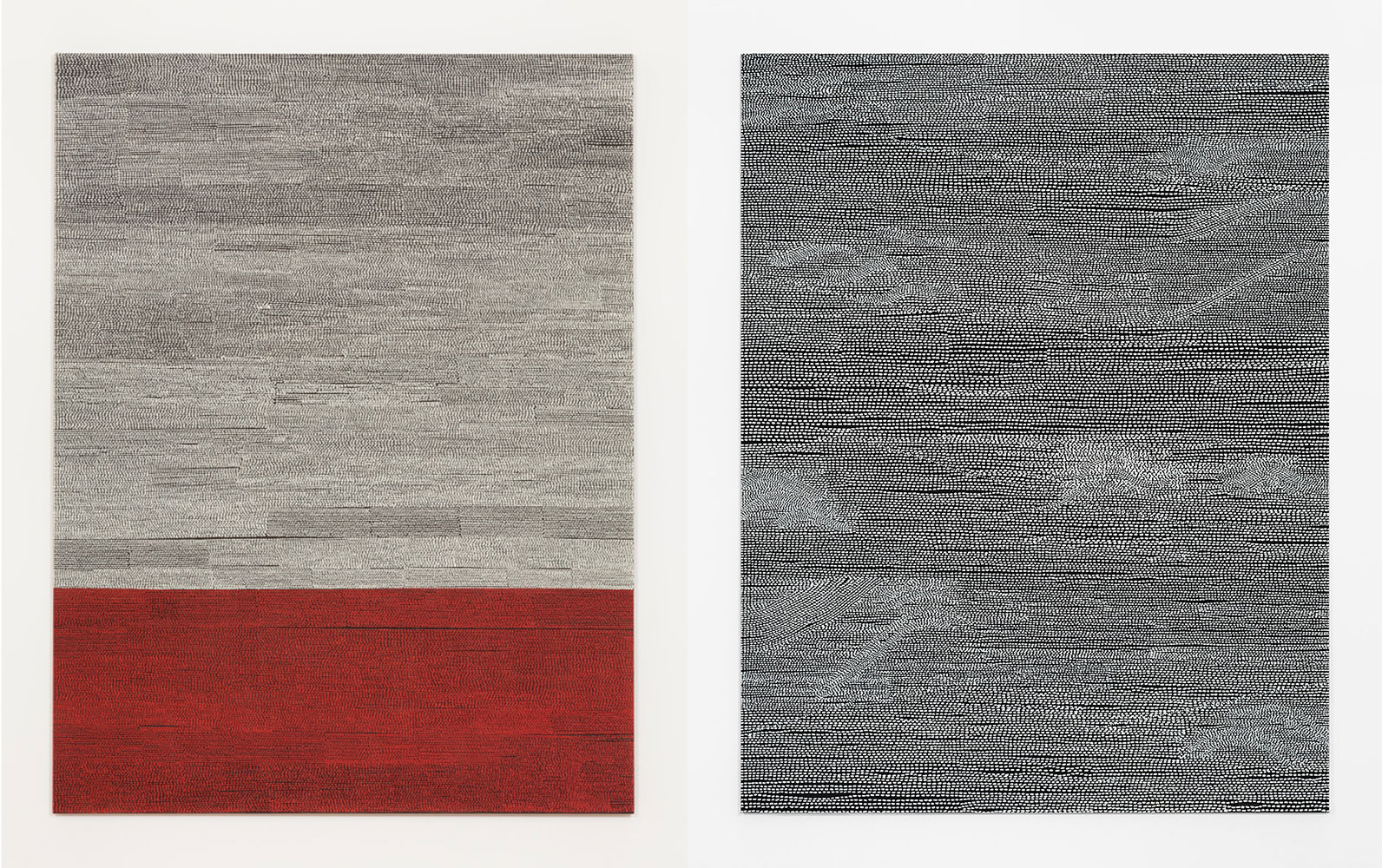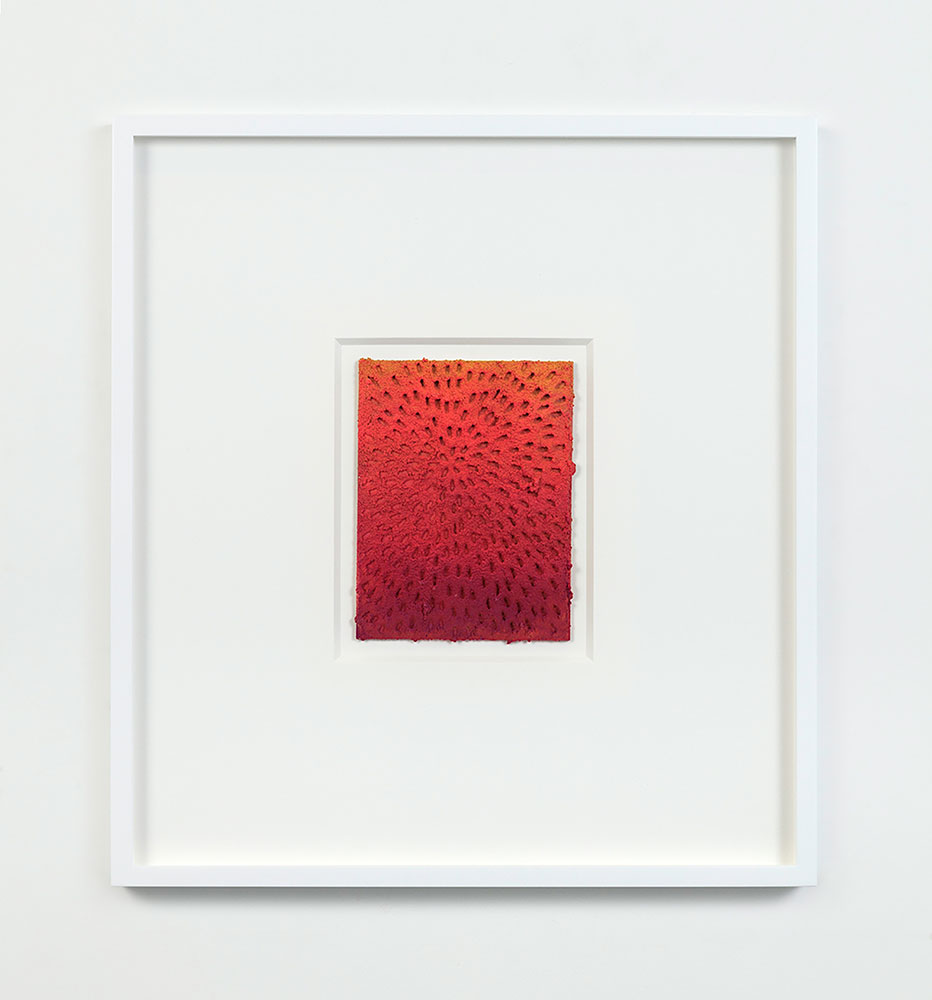ART CITIES: Shanghai-Jennifer Guidi
 Jennifer Guidi draws from several lineages, including the visionary Modernism of the American Southwest, process-oriented minimalism, Light and Space, lyrical West Coast abstraction, and the many strains of art throughout the globe in which intense optical patterning is a driving force. Her work is also inspired by meditative states of looking in which boundaries between the outside world and internally visualized spaces break down.
Jennifer Guidi draws from several lineages, including the visionary Modernism of the American Southwest, process-oriented minimalism, Light and Space, lyrical West Coast abstraction, and the many strains of art throughout the globe in which intense optical patterning is a driving force. Her work is also inspired by meditative states of looking in which boundaries between the outside world and internally visualized spaces break down.
By Dimitris Lempesis
Photo: The Long Museum Archive
The exhibition “Full Moon” is a survey of the artist’s work to date and also premieres a number of important new paintings by Jennifer Guidi. Herimmersive work operates within both the physical and metaphysical world. Her abstract compositions refer to the natural world literally and visually as she mixes sand with paint to depict arresting natural and cosmological phenomena. Her surroundings of Los Angeles, where she set up her studio after graduating from The School of the Art Institute of Chicago, are palpable through her work: the immense skies of California filled with the fleeting color of sunrises and sunsets, the particular hazy light of Los Angeles that blurs colors together and casts deep shadows and the mountains she passes daily on the way to her studio. Her practice is however deeply rooted in what also lies beyond physical surroundings, in the spiritual and metaphysical worlds. Each of her paintings is an ‘energy source’ indebted to the power of vibrations, and her works incorporate recurring symbols related to Western and Eastern religions, ancient civilisations and the esoteric sciences. Guidi’s very process of creating these serene, repetitive works is akin to a meditative practice. Reveling in external and internal symmetry in her work, such as sunrise and sunset, light and dark, these ideas sit alongside a scientific study of geometry and color theory, creating works that are not only visually in harmony but are epistemologically balanced too. Always drawn to sand as a material, Guidi experimented with translating sand to canvas as a permanent material, taking a few years to find the recognizable pattern that is now synonymous with her work. The highly textured works are created either by pressing divots with a dowel into a thick layer of wet sand, the ‘sand mandalas’, or by starting with a smooth sand layer and painting the mandala on top, the “universe mandalas”. A formative moment for her composition when “everything changed”, came after watching Tibetan monks make sand mandalas, where patterns radiate from one central point. Guidi moved from using horizontal lines as the foundation of her composition along which she placed random marks, to making concentric repeated and formulated holes that radiate from a central focal point. They appeal to our somatic senses, the regular indentations capture the artist’s corporeal presence in the work and encourage awareness of our own bodies’ movement. The meditative sense of calm Guidi reaches when creating the work suffuses through, drawing us into her harmonious and immersive compositions. The tangibility of Guidi’s movements and state of mind within the works makes them in part a self-portrait, with her presence forever fixed amongst the grains of sand. The artist’s fascination with light is inextricably tied to her attentiveness to color. The visible light spectrum is formed of all the colors of the rainbow, each wavelength of light vibrates at a different frequency to produce a different color. This idea forms the basis of her chromatic explorations and drew her to a study of chakra methodologies, an idea from early Hinduism. Chakras are energy centers within the human body, each giving off a different vibration, like the colors in the light spectrum. ‘Chakra’ in Sanskrit translates to ‘wheel’ or ‘circle’, linking the spiritual idea to that of the nineteenth-century invention of color wheels and broader color theory that associated specific color pairings with emotions and explored in detail connections between nature and color. Reading through these multiple lenses Guidi’s investigation of a rainbow spectrum of color is therefore more than an exploration of pure pigment, but rather a reflection on emotion, shape, nature and philosophy. The circle predominates Guidi’s work, geometrically present in the repeated holes, and symbolically representative of the sun and moon. Other shapes recur throughout her work, as an exploration of pure geometry and for their diverse symbolism. Triangles represent California’s mountains and refer to the allusions surrounding Ancient Egyptian pyramids. Guidi is drawn to the symbol of the serpent, relevant to ancient mythologies and mysticism. Their particularly complex symbolism represents rebirth, creativity and immortality through shedding of the skin and as the rod of Ascelplius, the Ancient Greek god of healing, and consequent use as a symbol of medicine. Guidi uses shaped canvases to explore these shapes and meanings, grouping symbols together in tandem and opposition to create dialogue between their formal lines and forge new meanings. These works are an innovative take on the traditional composition of diptychs and triptychs in paintings, using entirely separate canvases to create these formations, constructing works that lie somewhere between painting, sculpture and design. The title of Jennifer Guidi’s exhibition emphasizes the cosmological and mystical roots of her practice; the moon is like life: constantly changing; it is representative of peace, prosperity, harmony and luck; the full moon is a time to be receptive and to connect, which we are motivated to do throughout the exhibition. We are encouraged through engaging with her mandala-like works, not only to travel outward to be transported into distant landscapes and watch sunsets through her eyes, but also to travel inward to connect with our minds and spirits. During the full moon we are guided by unusually powerful light, symbolizing, much like the balance strived for in her work, a moment of unity between two dualities, where light can be found in darkness.
Photo Left: Jennifer Guidi, Rainbow Orb (Painted White Sand SF #1B, Natural Ground, Rainbow), 2017, sand and acrylic on linen, 34 x 27 inches (86.4 x 68.6 cm), © Jennifer Guidi, Courtesy the artist and The Long Museum. Right: Jennifer Guidi, An Endless Reflection of Your Beautiful Energy (White #2 PT, Black Sand SF #2E, Multicolor, Black Ground), 2020, sand, acrylic, and oil on linen, 76 x 58 inches (193 x 147.3 cm), © Jennifer Guidi, Courtesy the artist and The Long Museum
Info: The Long Museum(West bund), 3398 Longteng Avenue, Xuhui District, Shanghai, China, Duration: 1/7-21/8/2022, Days & Hours: Tue-Sat 10:00-18:00, www.thelongmuseum.org/



Right: Jennifer Guidi, Purple Rain (Painted Pink Sand SF #2F, Purple CS), 2016, sand, acrylic, and oil on linen, 92 x 74 inches (233.7 x 188 cm), © Jennifer Guidi, Courtesy the artist and The Long Museum

Right: Jennifer Guidi, Untitled (Field #11 Black and White), 2014, oil on linen, 76 x 58 inches (193 x 147.3 cm), © Jennifer Guidi, Courtesy the artist and The Long Museum

